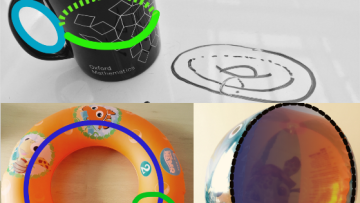14:15
Integrals and symplectic forms on infinitesimal quotients
Abstract
Title: Integrals and symplectic forms on infinitesimal quotients
Abstract: Lie algebroids are models for "infinitesimal actions" on manifolds: examples include Lie algebra actions, singular foliations, and Poisson brackets. Typically, the orbit space of such an action is highly singular and non-Hausdorff (a stack), but good algebraic techniques have been developed for studying its geometry. In particular, the orbit space has a formal tangent complex, so that it makes sense to talk about differential forms. I will explain how this perspective sheds light on the differential geometry of shifted symplectic structures, and unifies a number of classical cohomological localization theorems. The talk is
based mostly on joint work with Pavel Safronov.


